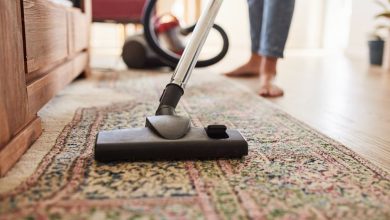Alopecia Areata: Causes, Symptoms & Treatments

You might have heard of a disease known as Alopecia areata that causes severe and unpredictable hair loss. It is an autoimmune disease that is common among men and women. Alopecia causes hair to fall out in patches. In some cases, the hair loss is extreme which leads to baldness while in others it is nothing more than a few patches. Alopecia can occur at any age but most cases eported before the age of 30. It is very stressful to lose hair at such a young age when you have a career or family to focus on. Many people want to know about the possible solutions that can help them get rid of this treatment.
Let’s talk about the causes, symptoms, and potential treatments of Alopecia areata in this article.
What are the Causes?
Alopecia areata occurs when the white cells in the body start attacking the cells in hair follicles. As a result, the hair follicles shrink and the hair growth slows down drastically. It is not clear why the body’s immune system starts behaving like this but genetics has something to do with it. Most likely one in five people suffering from alopecia have a family member with the same disease.
As far as stress is concerned, there is not enough evidence to prove that alopecia is caused by stress. An extreme level of stress might trigger the condition but mostly genetics is the main cause of the treatment.
Symptoms of Alopecia Areata
- One of the most prominent symptoms of Alopecia areata is losing hair in coin-sized patches. Mainly the hairs are lost from the scalp but other areas can be affected too like beard, eyelashes, or eyebrows.
- You might also experience itching and burning in the affected area before you start losing hair.
- The hair follicles experience inflammation.
- The hair follicles are not destroyed which means they can re-grow. So, almost 30% of the patients who suffer from alopecia areata go through a cycle of hair loss and hair regrowth.
- Another noticeable symptom of alopecia is that it affects your fingernails and toenails. Your nails might show white spots or pinpoint dents. They can lose their shine and become very thin.
- You might develop white hairs in the affected area.
Treatment of Alopecia
Some potential treatments can fight alopecia and offer effective solutions. Some of the common treatments include;
Low-Level Laser Therapy (LLLT)
It is the most effective alopecia treatment in Dubai that not only stops hair loss but also stimulates hair growth. During the procedure, a diode low-level laser beam is used that activates the weak follicles and improves the blood circulation to the scalp. It also helps in supplying essential nutrients to the hair-like oxygen and vitamins.
Topical Immunotherapy
People suffering from severe alopecia can also opt for topical immunotherapy. This technique involves applying a chemical substance to the scalp that strengthens the hair roots and shafts.
Mesotherapy
It is a non-surgical procedure that can treat alopecia areata by injecting minerals like zinc, biotin, folic acid and vitamin B into the scalp. The quantity of these minerals is microscopic and the results include a reduction in hair loss. Mesotherapy also causes the scalp to repair itself and stimulates the circulation of blood.
Is it better to get a hair transplant early?
No, getting a hair transplant at an early age will not help. It would rather increase your expense because you will require another hair transplant surgery later. The reason is, when you are young it is difficult to determine the type of hair loss you are suffering from. Also, the hair loss keeps on progressing. It does not stop. Therefore, if you will undergo a hair transplant at this stage, it will not deliver the required results.
You will have permanent transplanted hairs at some areas of the scalp and hair loss progressing in other areas. This results in an uneven appearance of hair which does not look natural. Therefore, the best age to get a hair transplant is 25 or more. You have to wait until your hair loss has stopped and the type of hair loss has been detected successfully.
What is a hair transplant in the UAE?
Well, the hair transplant procedure in Dubai, UAE is performed using the same techniques that are being used all over the world. The hair follicles are taken from the donor area and transplanted to the recipient area. Two major techniques are used i.e. FUT or FUE. The donor area is mostly the back or sides of the scalp.
In a FUT hair transplant, a linear strip is cut from the back of the scalp that contains hair follicles. This strip is dissected to obtain more grafts which are then transplanted to the recipient areas. However, in the FUE procedure, hair follicles are extracted directly from the scalp with a punch tool and implanted. FUE procedure has furthermore typed like stem cell FUE and robotic hair transplant.
Now coming to the cost of hair transplant in the UAE, it can cost you approximately AED 15,000 to AED 40,000 on average depending on a variety of factors like;
- Type of technique
- Size of the targeted area
- Number of grafts required
- The expertise of the surgeon
- The geographical location of the clinic
- Facilities provided
Do laser treatments really reverse scalp hair loss?
Yes, laser treatment can reverse scalp hair loss. A new laser treatment introduces that actually stops hair loss and promotes hair regrowth. It is name as Low-Level Laser Therapy (LLLT). This laser hair loss treatment involves an advanced laser system that utilizes diode low-level laser technology.
During the treatment when the laser is direct to the targeted area, it penetrates deeply into the roots of hair follicles. This leads to the activation of weak hair follicles and the vascularization process is also improved. LLLT also enhances the circulation of blood to the scalp and facilitates the supply of essential nutrients and oxygen to the hair follicles. In this way, the hairs stop falling and start re-growing.
The Bottom Line
Alopecia Areata can be distressing to handle especially if you have given up on the treatment. You can try some of the treatments mentioned above to treat this autoimmune disease. Do consult with an expert before choosing any treatment because you might not be an ideal candidate for the procedure you think is best for you.





